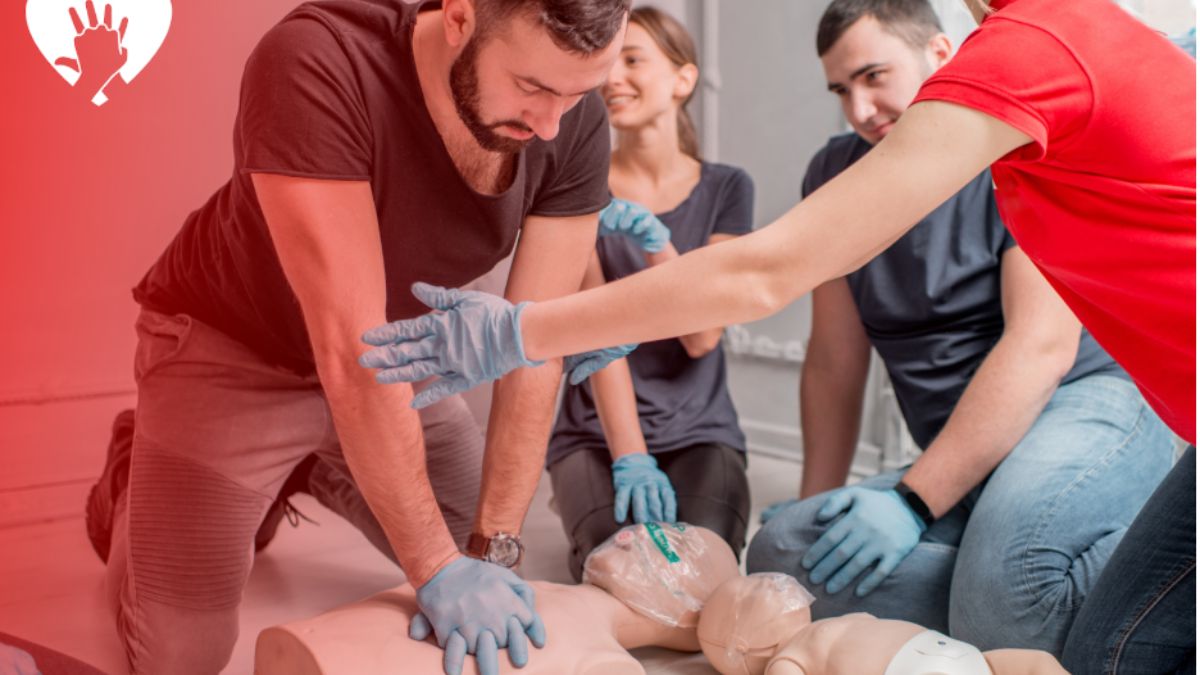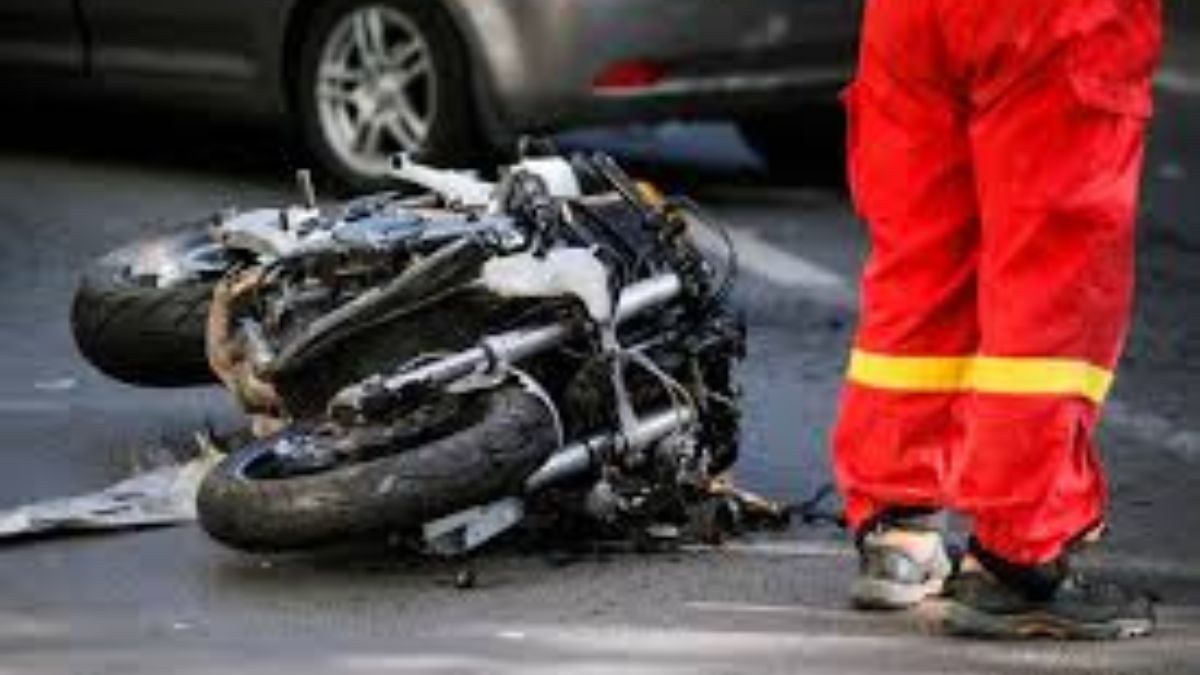TOPIC
Saving Costs and Boosting First Aid Training Efficiency for Your Company

In today’s competitive business environment, companies are constantly seeking ways to optimize operations, reduce costs, and enhance employee productivity.
One often-overlooked area with significant potential for cost savings and efficiency gains is workplace safety training, particularly first aid at work onsite training.
By bringing first aid training directly to your workplace, businesses can not only save money but also improve training outcomes, foster a safer work environment, and boost employee morale.
This article explores the benefits of onsite first aid training, how it can reduce costs, and why it’s a smart investment for companies of all sizes
The Importance of First Aid Training in the Workplace
Workplace accidents and medical emergencies can happen at any time, regardless of the industry.
From minor injuries like cuts and burns to more serious incidents such as cardiac arrests or allergic reactions, having employees trained in first aid can make a critical difference.
First aid training equips employees with the skills to respond effectively in emergencies, potentially saving lives and minimizing the severity of injuries.
Beyond the obvious safety benefits, first aid training also contributes to:
- Compliance with Regulations: Many countries require businesses to have a certain number of first aid-trained employees based on the size and nature of the workplace.
- Reduced Downtime: Quick and effective responses to accidents can minimize disruptions and keep operations running smoothly.
- Enhanced Employee Confidence: Trained employees feel more confident and empowered, leading to a more positive work environment.
What is Onsite First Aid at Work Training?
Onsite first aid training involves bringing certified trainers to your workplace to conduct first aid courses tailored to your company’s specific needs.
Unlike offsite training, where employees travel to external locations, onsite training is delivered in a familiar environment, making it more convenient and effective.
Key Benefits of Onsite First Aid Training
- Cost Savings
-
-
- Reduced Travel Expenses: Onsite training eliminates the need for employees to travel to external training centers, saving on transportation costs.
- Minimized Downtime: Employees can attend training without taking significant time away from their work, reducing lost productivity.
- Bulk Discounts: Training providers often offer discounts for group sessions, making onsite training more cost-effective than individual offsite courses.
-
- Customized Training
-
-
- Onsite training can be tailored to address the specific risks and challenges of your workplace. For example, a manufacturing company might focus on treating burns and fractures, while an office-based business might emphasize CPR and managing stress-related incidents.
-
- Improved Engagement and Retention
-
-
- Training in a familiar environment helps employees feel more comfortable and engaged. Practical, hands-on exercises using workplace-specific scenarios enhance learning and retention.
-
- Convenience and Flexibility
-
-
- Onsite training can be scheduled at times that suit your business operations, minimizing disruptions. It also allows for larger groups to be trained simultaneously, ensuring consistent knowledge across the team.
-
- Enhanced Workplace Safety Culture
-
- Onsite training demonstrates your company’s commitment to employee safety, fostering a culture of care and responsibility. This can lead to higher morale, increased loyalty, and improved overall performance.
How Onsite First Aid Training Saves Costs
- Reduced Absenteeism
-
-
- Employees trained in first aid can respond quickly to accidents, reducing the severity of injuries and the need for extended sick leave. This helps maintain productivity and reduces the financial impact of absenteeism.
-
- Lower Insurance Premiums
-
-
- Many insurance providers offer reduced premiums for companies with robust safety programs, including first aid training. Demonstrating a commitment to workplace safety can lead to significant savings.
-
- Fewer Workplace Incidents
-
-
- A well-trained workforce is better equipped to prevent accidents and respond effectively when they occur. This reduces the likelihood of costly workplace incidents and associated legal liabilities.
-
- Efficient Use of Resources
-
- Onsite training allows companies to train multiple employees at once, maximizing the use of time and resources. It also eliminates the need for repeated sessions, as all relevant staff can be trained simultaneously.
Boosting Training Efficiency with Onsite First Aid Training
- Tailored Content
-
-
- Onsite training programs can be customized to address the specific needs of your workplace, ensuring that employees learn skills that are directly applicable to their roles.
-
- Hands-On Learning
-
-
- Practical, scenario-based training helps employees retain information better than theoretical lessons. Onsite training allows for real-life simulations using workplace equipment and environments.
-
- Immediate Application
-
-
- Employees can immediately apply what they’ve learned in their daily work, reinforcing their skills and improving overall workplace safety.
-
- Consistent Standards
-
- Onsite training ensures that all employees receive the same high-quality instruction, creating a consistent standard of knowledge and preparedness across the organization.
Implementing Onsite First Aid Training in Your Company
- Assess Your Needs
-
-
- Identify the specific risks and challenges in your workplace to determine the type of first aid training required. Consider factors such as the size of your workforce, the nature of your industry, and any regulatory requirements.
-
- Choose a Reputable Provider
-
-
- Select a certified training provider with experience in delivering onsite first aid courses. Look for providers that offer customizable programs and have positive reviews from other businesses.
-
- Schedule Training Sessions
-
-
- Plan training sessions at times that minimize disruptions to your operations. Consider offering multiple sessions to accommodate different shifts or departments.
-
- Promote Participation
-
-
- Encourage employees to participate by highlighting the benefits of first aid training, such as increased confidence, improved safety, and potential career development opportunities.
-
- Evaluate and Reinforce
-
- After the training, gather feedback from participants to identify areas for improvement. Regularly reinforce first aid skills through refresher courses and practical drills.
Examples of Onsite First Aid Training Success
- Manufacturing Company Reduces Workplace Injuries
-
-
- A mid-sized manufacturing company implemented onsite first aid training for its employees, focusing on treating burns, cuts, and fractures. Within a year, the company reported a 25% reduction in workplace injuries and a significant decrease in related costs.
-
- Office-Based Business Saves on Insurance Premiums
-
-
- An office-based business introduced onsite first aid training, including CPR and stress management. The company’s insurance provider recognized its commitment to safety and reduced its premiums by 15%.
-
- Retail Chain Improves Employee Confidence
-
- A national retail chain conducted onsite first aid training for its store managers and staff. Employees reported feeling more confident in handling emergencies, leading to faster response times and improved customer satisfaction.
Conclusion
Onsite first aid at work training is a cost-effective and efficient way to enhance workplace safety, reduce costs, and boost employee morale. By bringing training directly to your workplace, you can ensure that your employees receive tailored, practical instruction that meets your specific needs.
The benefits of onsite first aid training extend beyond compliance and cost savings. It fosters a culture of safety, empowers employees, and demonstrates your company’s commitment to their well-being.
In a world where workplace safety is more important than ever, investing in onsite first aid training is a smart decision that pays dividends in the long run.
So, if you’re looking to save costs, improve training efficiency, and create a safer work environment, consider implementing onsite first aid training for your company. It’s an investment in your employees, your business, and your future.
TOPIC
What If a Motorcycle Defect Caused Your Crash?

Imagine riding your motorcycle, feeling the wind, when suddenly, disaster strikes. You crash. It’s terrifying and confusing. What if a defect in your motorcycle caused this tragedy? You need answers. A defective part could risk your safety more than you realize. You deserve to know the truth behind the accident and hold the right parties accountable. The journey to uncovering the cause starts with understanding what went wrong. Was it a faulty brake, ineffective steering, or a weak frame? Each could spell disaster. You must act swiftly to protect yourself and others. Learning who is responsible can empower you to prevent future harm. If you suspect a defect, it’s crucial to seek expert advice. Knowing where to turn is important. Inquire here for guidance on what steps to take next. Remember, taking action isn’t just about justice. It’s about safety and prevention.
Identifying the Defect
The first step in addressing a motorcycle defect is identifying the problem. Mechanical issues can range from minor to severe. Some common defects include brake failure, steering malfunctions, and structural weaknesses. These defects can result from manufacturing errors or design flaws. Recognizing a defect requires keen observation and sometimes expert assistance. If you notice unusual sounds, reduced performance, or if something feels off, you may be dealing with a defect.
Types of Common Motorcycle Defects
Understanding the types of defects helps in determining next steps. Below is a table summarizing common defects:
| Defect Type | Possible Consequences |
| Brake Failure | Increased stopping distance, collisions |
| Steering Malfunction | Loss of control, veering off-road |
| Structural Weakness | Frame collapse, severe injury |
Taking Action
Once you suspect a defect, action is necessary. Report the issue to the manufacturer and consult with a legal professional. It’s not just about getting compensation. It’s about preventing similar incidents. If you’re unsure how to proceed, resources are available. For more information on vehicle safety and defects, visit the National Highway Traffic Safety Administration website.
Legal Implications
Understanding the legal landscape is essential. If a defect caused your crash, you might have a case against the manufacturer or distributor. Lawsuits can be complex. They often require proving the defect and its direct link to the crash. Legal experts can guide you through this process. They help gather evidence and build a strong case.
Preventing Future Incidents
Prevention is crucial. Regular maintenance and inspections are key. Always check for recalls related to your motorcycle model. Keeping your motorcycle in top condition reduces the risk of defects. Educating yourself about potential risks empowers you to make informed decisions. It ensures your safety and the safety of others on the road.
Conclusion
A motorcycle accident caused by a defect is more than an unfortunate event. It’s a call to action. Recognizing defects, taking appropriate steps, and preventing future incidents are essential. Staying informed and proactive ensures safer rides for everyone. Remember, the road to safety starts with awareness and decisive action.
TOPIC
How Wildlife‑Related Crashes Affect Liability And Insurance Claims

Every year, wildlife causes thousands of accidents on our roads. These crashes can be distressing and lead to unexpected consequences. When you collide with an animal, you’re not just facing potential damage to your car. You might also deal with serious injuries and complex insurance claims. Understanding your liability in these situations is crucial. Insurance policies often vary, and knowing what to expect can help you navigate this tricky situation. You may wonder about coverage for repairs and medical costs. Or perhaps you’re concerned about how this affects your insurance rates. Each situation is different, and the details matter. Learn about your rights and responsibilities to protect yourself better. It’s essential to stay informed. As you drive, stay alert and watch the road. Discover more about how wildlife-related crashes impact your insurance claims and liabilities. Your awareness could make a significant difference in your life.
Understanding Wildlife-Related Crashes
Encountering wildlife on the road can be sudden and frightening. Animals like deer, moose, and even smaller animals pose significant risks. The damage can be extensive, affecting both your vehicle and your peace of mind. These incidents often happen during dawn and dusk when animals are most active. Avoiding such crashes requires vigilance and quick reactions. However, accidents still occur despite your best efforts.
Liability in Wildlife-Related Accidents
Determining liability in wildlife accidents is often complex. Generally, no one owns wild animals, so the responsibility doesn’t fall on a specific party. If you collide with wildlife, liability typically rests with the driver. This means you could be responsible for repair costs and potential increases in insurance premiums. Knowing what your insurance covers is essential. Comprehensive coverage often includes animal collisions, while liability insurance does not. Reviewing your policy details can prevent surprises later.
Insurance Claims: What to Expect
Filing an insurance claim after a wildlife crash can seem daunting. Knowing the steps to take can ease the process. First, ensure everyone’s safety and contact authorities if necessary. Document the incident with photos and notes about the conditions and time. Contact your insurance company promptly to report the accident. Each insurer may handle claims differently, so understanding your policy helps. Coverage for repairs, medical costs, and even towing depends on your insurance type.
Comparing Coverage Types
| Coverage Type | Includes Wildlife Collisions | Repair Costs Covered |
| Liability Insurance | No | No |
| Comprehensive Insurance | Yes | Yes |
| Collision Insurance | Sometimes | Depends on the provider |
This table shows how different coverage types handle wildlife collisions. Comprehensive insurance is your safest bet for full coverage in these scenarios. Always review your policy documents to understand your coverage scope.
Prevention and Safety Tips
Preventing wildlife crashes involves both awareness and action. Stay attentive, especially in areas with high animal activity. Use high beams when safe to spot animals earlier. Slowing down can give you more time to react. In areas with frequent wildlife crossings, be extra cautious. Whistles or devices claiming to deter animals are often ineffective. Instead, focus on driving carefully and maintaining control at all times. For more safety tips, visit National Highway Traffic Safety Administration.
The Role of the Community
Communities can play a part in reducing wildlife-related accidents. Local measures like installing signs or creating wildlife corridors can help. Educating drivers about high-risk areas and times is effective. Collaborating with local wildlife experts to understand animal patterns can also reduce incidents. Community effort is key to safer roads for everyone.
Conclusion
Wildlife-related crashes are unpredictable but manageable. By understanding your insurance policy and knowing your responsibilities, you can better handle these incidents. Prevention is key, but when accidents happen, being prepared helps. Ensure your policy covers potential wildlife encounters. Stay informed and cautious on the road. By taking these steps, you protect yourself and others. Drive safely and stay aware to minimize risks and enjoy peace of mind.
TOPIC
What To Do If A Drunk Driver Causes A Fatal Accident

A fatal accident involving a drunk driver shatters lives. If you face this tragedy, knowing your next steps is crucial. This guide helps you navigate these challenging moments. First, ensure your safety and others around you. Contact emergency services immediately. Authorities need to secure the scene and gather evidence. Then, reach out to family or friends for emotional support. The impact of such an event can be overwhelming. Seek professional legal advice promptly. Legal experts can help you understand your rights and options. Their assistance may be vital in ensuring justice for your loved one. Document everything you remember about the incident. Details can be essential later. Also, consider seeking counseling. Emotional recovery is as important as legal resolution. Addressing these steps eases the burden during this difficult time. Being prepared supports you in handling this tragic situation with strength and clarity. You are not alone in this journey.
Immediate Steps After the Accident
Once the scene is secure, focus on gathering information. Collect the names and contact numbers of witnesses. Take photos of the accident site if possible. These will aid in building your case. Understandably, emotions run high. However, clear documentation is crucial. Law enforcement will compile a report. Request a copy for your records. This report contains essential details. It will be crucial for legal and insurance purposes.
Legal Considerations
Engaging with the legal system can be daunting. Yet, it is an important step forward. Secure a reputable attorney experienced in dealing with drunk driving incidents. They will navigate the complexities of the law on your behalf. Start this process early. Legal procedures often require extensive time and effort. The attorney will help file claims and represent you in court if necessary.
Emotional and Psychological Support
Processing grief and trauma requires time and support. Many find comfort in speaking with counselors or support groups. There are professionals trained to help you through this difficult period. Friends and family members are also invaluable. Be open about your needs and feelings. They can offer a listening ear and necessary support.
| Support Option | Advantages | Disadvantages |
| Professional Counseling | Expert guidance, Confidential | Costly, Requires scheduling |
| Support Groups | Shared experiences, Community support | Availability varies, Less personalized |
| Family and Friends | Immediate availability, Emotional bond | May lack expertise, Emotionally invested |
Financial and Insurance Matters
Accidents lead to unexpected financial burdens. Insurance claims need to be filed promptly. Contact your insurance company to start the process. Provide them with the accident report and any additional information. It is also wise to consult with your legal advisor during this stage. They can ensure all documents are appropriately handled. In some cases, the process may lead to compensation. This can aid with medical or funeral expenses.
Long-Term Recovery and Resolution
Healing from this tragedy takes time. Some days will be harder than others. Establishing a routine can help restore a sense of normalcy. Engage in activities that bring you relief and comfort. Consider joining initiatives that advocate against drunk driving. Contributing to a cause may offer a sense of purpose.
Additional Resources
For more guidance, visit the National Highway Traffic Safety Administration (NHTSA). They offer resources on dealing with drunk driving incidents. You can also explore the Mothers Against Drunk Driving (MADD) website for support networks and advocacy opportunities.
Dealing with the aftermath of a drunk driving accident is a profound challenge. Each step taken brings you closer to resolution and healing. Reliable support and information make a significant difference. Remember, while the journey is difficult, you have resources and people ready to help. By taking active steps, you honor the memory of your loved one and contribute to a safer community.
-

 BLOG9 months ago
BLOG9 months agoIZoneMedia360 .Com: Exploring the Features and Benefits
-

 BLOG12 months ago
BLOG12 months agoAbout Blog TurboGeekOrg: A Go-To Hub for Tech Enthusiasts and Latest Innovations
-

 BLOG1 year ago
BLOG1 year agoWhat is a Golden Transit in Magi Astrology?
-

 NEWS9 months ago
NEWS9 months agoChloe Berger News: Insights on Employee Rights and Talent Retention
-

 BLOG9 months ago
BLOG9 months agoA Complete Guide to ProcurementNation.com Shipping
-

 ENTERTAINMENT1 year ago
ENTERTAINMENT1 year agoTyquaez Pickett: A Rising Star in the Entertainment World
-

 BLOG11 months ago
BLOG11 months agoWho Is Hall Sinclair? The True Story of Olivia Colman’s Son
-

 NEWS9 months ago
NEWS9 months agoThe Vision and Innovation of News Theamericansecretscom
